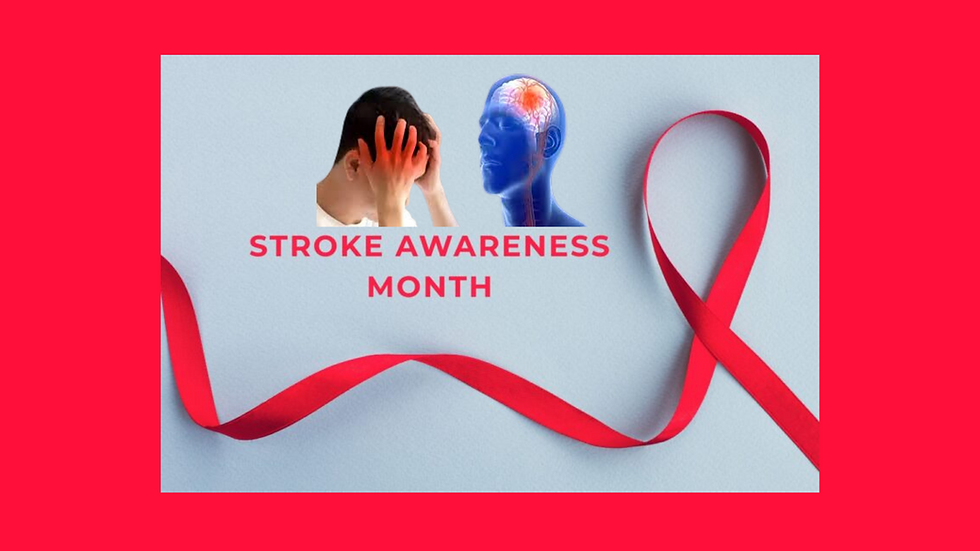Cracking the Code: Understanding Strokes and How to Stay Ahead
- Melissa Farmer-Hill

- May 1, 2024
- 3 min read

While May is widely recognized as Mental Health Awareness Month, it's also essential to highlight other critical health issues, such as National Stroke Awareness Month. Have you or someone you know ever experienced a stroke? Were you aware that in the United States someone has a stroke every 40 seconds? Increasing our knowledge about strokes can greatly enhance the potential to save a life.
A stroke, often referred to as a "brain attack," occurs when the blood supply to part of the brain is interrupted or reduced, depriving brain tissue of oxygen and nutrients. This can cause brain cells to die, leading to serious health complications. Strokes can be debilitating and life-threatening, making it crucial to recognize the signs, understand who is most at risk, and take steps to prevent them.
Recognizing the signs of a stroke is crucial for prompt treatment, as every minute counts. The acronym FASTER can help you remember the signs. "F" stands for face drooping: one side of the face may droop or feel numb. Ask the person to smile to check for this sign. "A" is for arm weakness: one arm may be weak or numb. Ask the person to raise both arms to see if one arm drifts downward. "S" represents stability, the person may experience dizziness or a hard time keeping balance. “T” is for talking, check to see if they can talk or have slurred speech. “E” stands for eyes, they may have difficulty seeing out of one or both eyes, double vision. Once you recognize these signs then REACT which is what the “R” stands for. Call 911 immediately, even if the symptoms go away. Acting and using the FASTER method can minimize the damage caused by a stroke and improve the chances of recovery.
While strokes are often associated with older adults over 65, it's important to recognize that other factors can increase the risk regardless of age. A family history of stroke can elevate the risk. Having high blood pressure, smoking tobacco, having diabetes, high cholesterol levels and being overweight or physically inactive also contribute to the risk. Additionally, atrial fibrillation, a heart condition that leads to the formation of blood clots, can significantly increase the risk of stroke. Understanding these risk factors is crucial for taking proactive steps to reduce the likelihood of experiencing a stroke.
Prevention is key when it comes to reducing the risk of strokes. While some risk factors are beyond our control, there are several proactive steps we can take. Maintaining a healthy diet rich in fruits, vegetables, whole grains, and lean proteins, while limiting saturated fats, trans fats, cholesterol, salt, and added sugars, can significantly lower the risk. Regular exercise is also important, with a goal of at least 150 minutes of moderate-intensity aerobic activity per week. Additionally, maintaining a healthy weight, avoiding tobacco use, limiting alcohol consumption, and managing stress levels can all contribute to reducing the risk of strokes and promoting overall well-being.
Strokes are a serious medical emergency that can have lasting effects on health and quality of life. Knowing the signs, understanding the risk factors, and taking steps to prevent strokes are crucial for maintaining good health. By adopting a healthy lifestyle and managing risk factors, we can reduce the likelihood of experiencing a stroke and promote overall well-being.







Comments